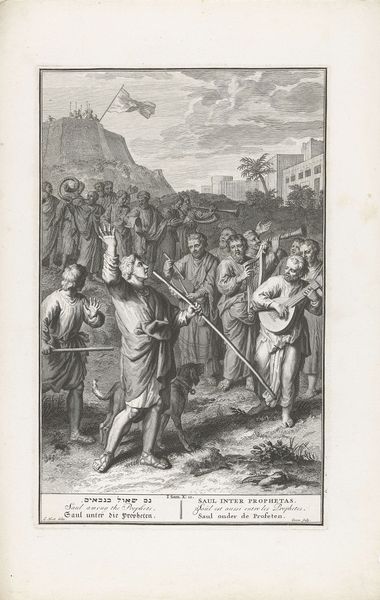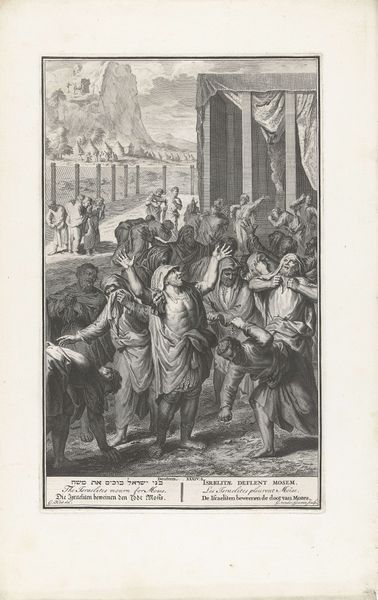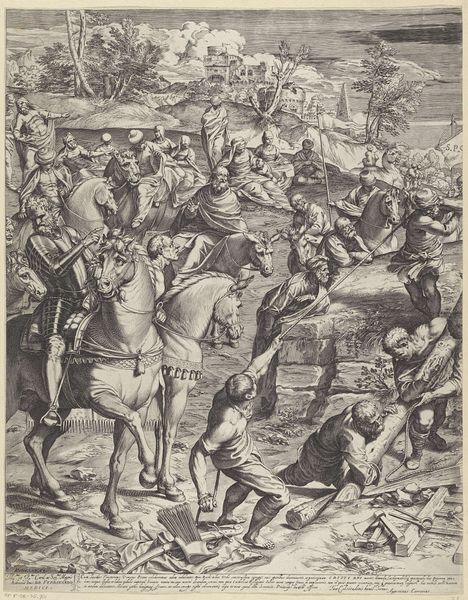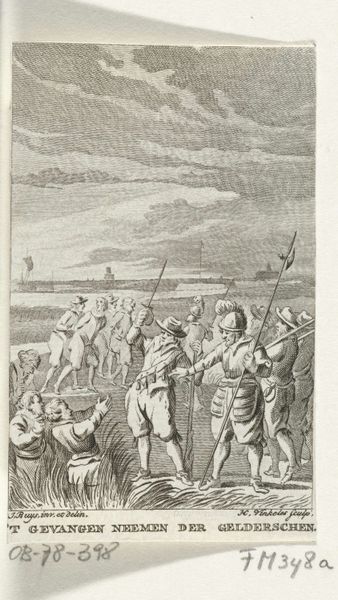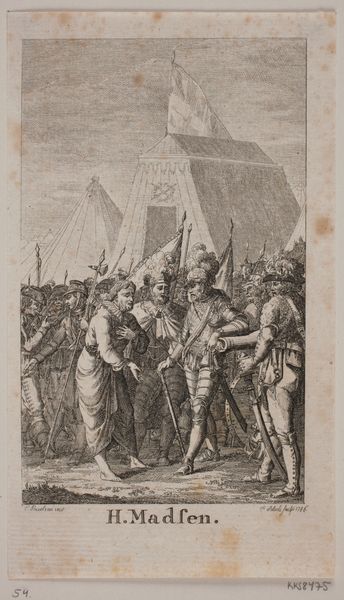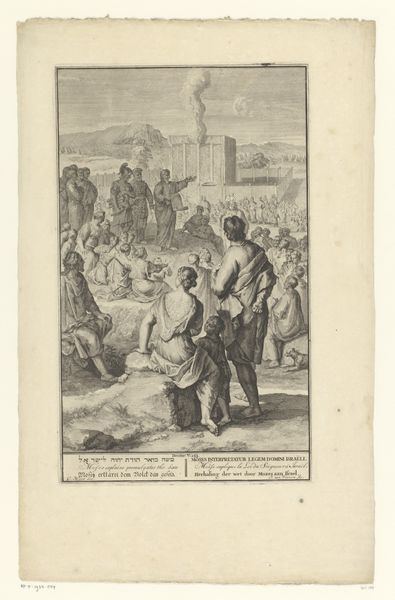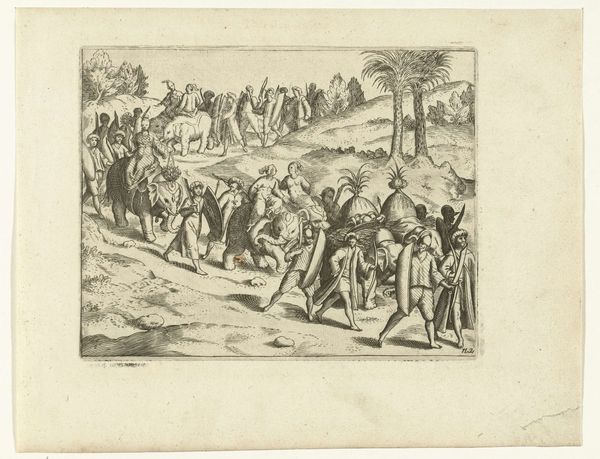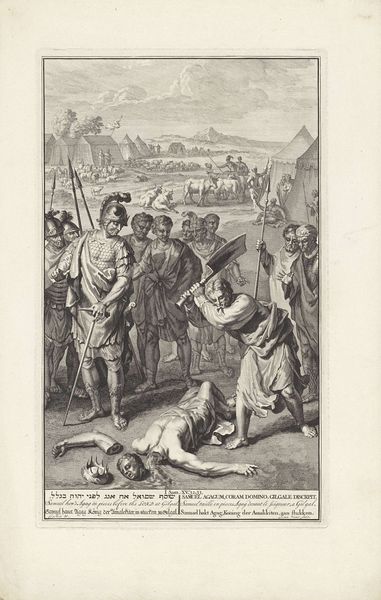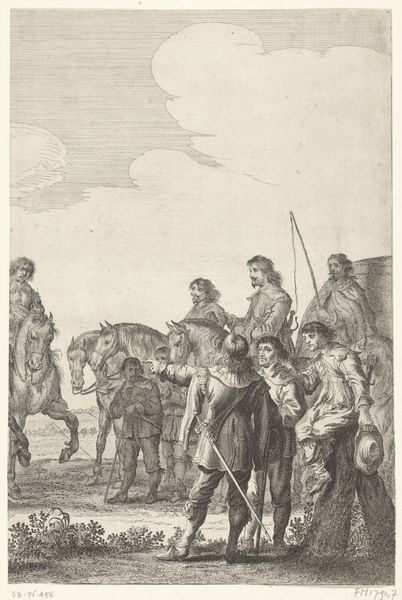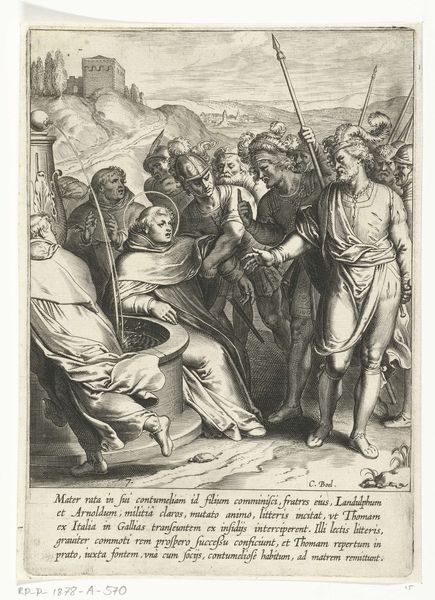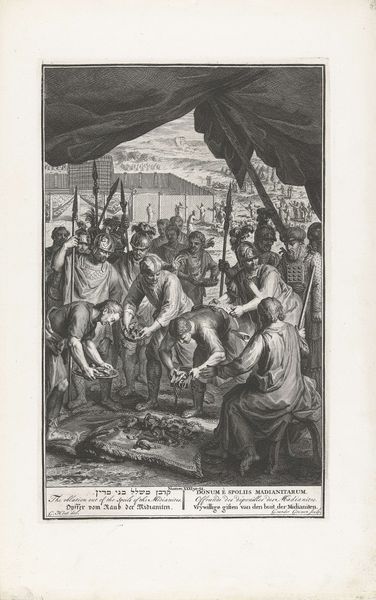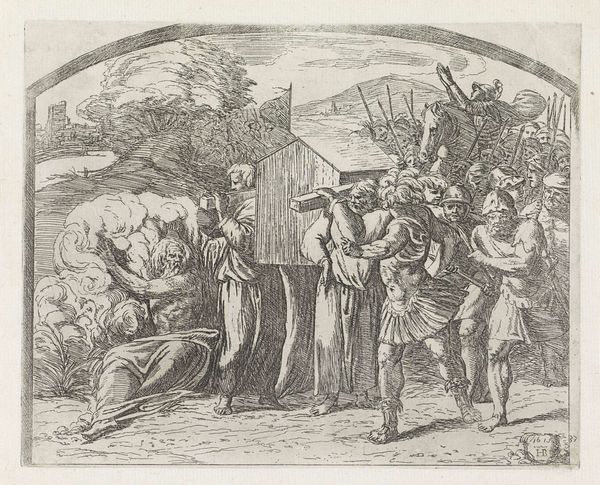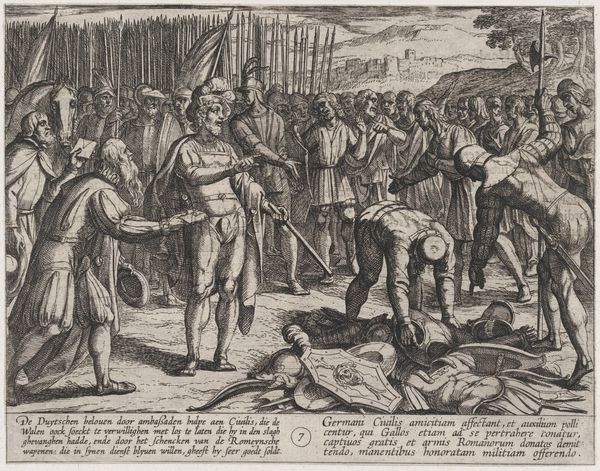
De nakomelingen van Ruben verantwoorden zich bij de Israëlieten over de bouw van een altaar 1720 - 1728
0:00
0:00
engraving
#
baroque
#
history-painting
#
engraving
Dimensions: height 361 mm, width 223 mm
Copyright: Rijks Museum: Open Domain
Editor: Here we have an engraving by H. de Blois from the early 18th century, titled "The descendants of Ruben justify themselves to the Israelites about the construction of an altar". It feels very theatrical to me, like a scene from a play. What do you see in this piece? Curator: It is theatrical. But beyond the immediate drama, I see a reflection of power dynamics and the negotiation of identity within a community. The act of building an altar carries enormous symbolic weight. What happens when marginalized communities within a larger group, like the descendants of Ruben here, attempt to express their identity or practice their faith in a way that diverges from the dominant culture? Editor: So, it's not just about building an altar, but about who gets to build it and what that signifies? Curator: Precisely! The descendants of Ruben likely felt a need to assert their distinctiveness, but that assertion is immediately met with suspicion and interrogation. Power is centralized, with architecture as the way of expressing that force through symbols of status and tradition. How do you interpret the reactions of the Israelites here? Do they appear receptive, neutral, or hostile? Editor: Definitely not neutral, there’s suspicion there, concern. Perhaps even fear. Curator: And that fear is often rooted in a fear of the "other," isn't it? This image prompts us to consider how societies regulate identity, faith, and expressions of difference, even within ostensibly unified groups. What kind of questions does it raise for our modern society? Editor: Wow, I hadn't considered it that way. It makes me think about cultural appropriation and how certain acts can be interpreted as challenges to existing power structures. It’s really a timeless story. Curator: Absolutely. And by analyzing these historical narratives, we can gain insights into the complexities of identity and the enduring human struggle for recognition and self-determination. This seemingly simple image contains a potent and multifaceted dialogue about the complexities of human society and groupthink.
Comments
No comments
Be the first to comment and join the conversation on the ultimate creative platform.
